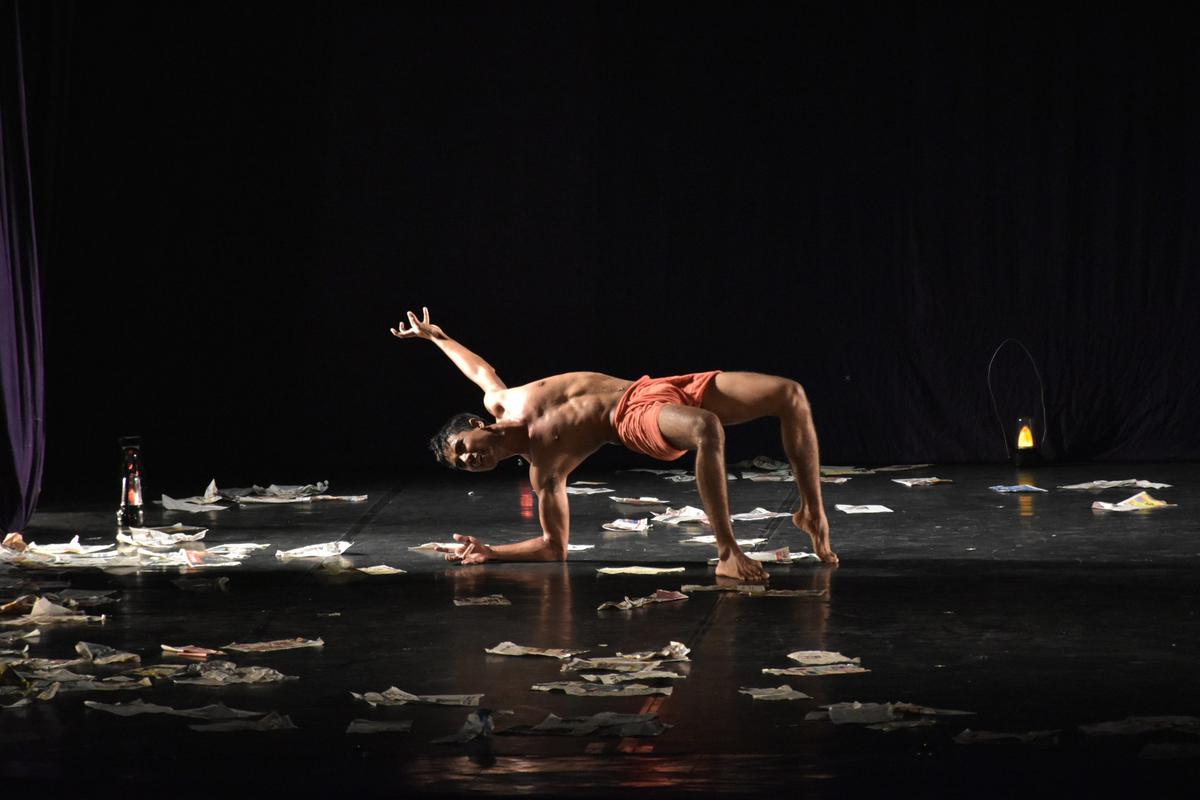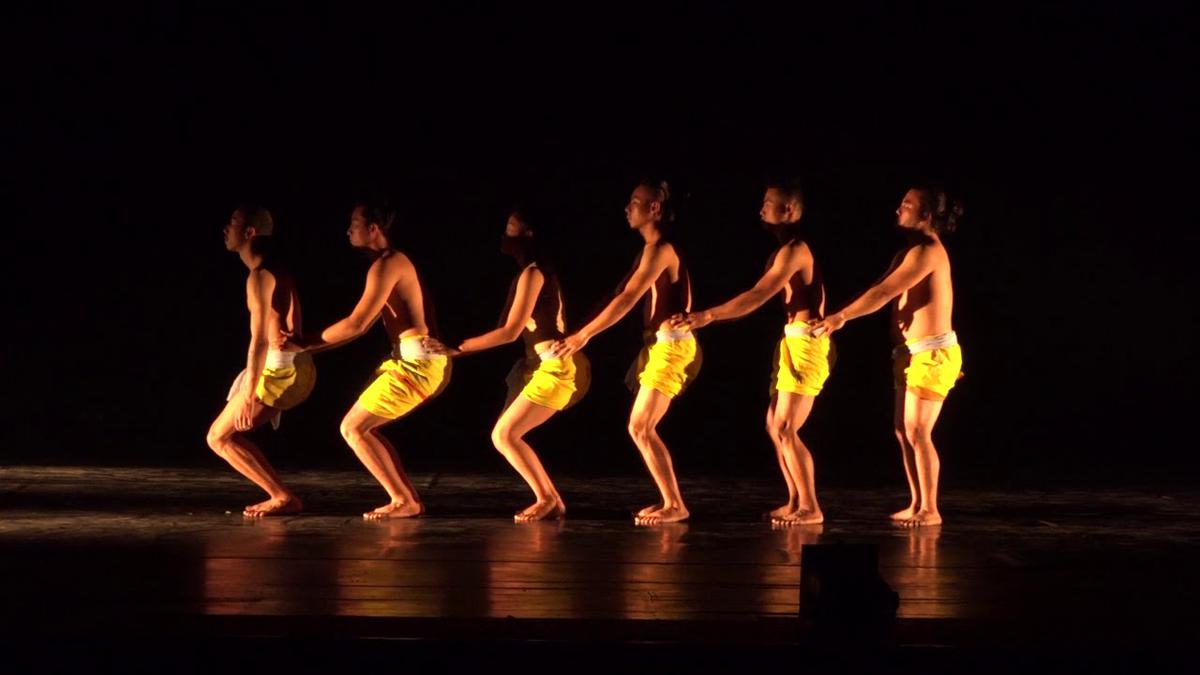Surjit Nongmeikapam in ‘All in 1’
There is a stillness in his dance. Even as he is moving he seems like he is not. Between those fleeting pauses and subtle movements, you become intensely aware of your own body, for this dance demands that you watch it from deep inside. You may not make sense of it but can sense it. This is a dance, not boxed in by definitions. It is raw, sometimes broken and tells a story on its own terms.
Surjit Nongmeikapam wanted to be a stuntman in films but went from Manipur to Dehradun to study Hotel Management. He soon realised it was not quite for him. Having been an athlete and badminton player, he wondered what he would become. He loved to move and often could be found dancing to Bollywood numbers in his hometown, Imphal. Seeing his proclivity for dance, his parents decided to enrol him in a BA Choreography course all the way down south, in Bengaluru.
“They thought the course would help me earn a livelihood. I hated it initially and wanted to run away,” says Surjit, who was a mentor and part of a panel discussion at the annual Prakriti Excellence in ContemporaryDance Awards (PECDA) held recently in Bengaluru.

From Surjit’’s choreographic work ‘Nerves’
“It was frustrating. I had thought I would learn to dance. I did not want to learn theory or Kathak.” The fact that he did not have any training in a dance form made it worse. “I came from nothing. I knew nothing about what is dance or what is theatre,” he recalls. It was the “trust and patience” of guru Maya Rao, alongside support from some of his co-learners that kept him going. In the two years that followed, Surjit went back to Imphal to train in Manipuri dance and martial arts. Before long, he was back in Bengaluru as a dancer in the Natya STEM Dance Kampni. The restriction he felt with form grew stronger. “I wanted to experiment. I wanted to know myself through dance. I did not want to dance fixed items,” says Surjit, recalling that even as a child he would make up his own stories at play.
“I am still a dreamer,” says Surjit, adding that though he understood the value of the training he had received, he was eager to find his “own movement vocabulary.” Attending the Gati Dance Residency in 2011 opened up possibilities in that direction. “I interacted with several contemporary dancers. I could finally experiment. Contemporary dance gave me space.” Surjit could discover and express movements rooted in him. Interacting with dancers from varied backgrounds inspired him to believe in his own emerging language as a dancer.

From Surjit’’s choreographic work ‘Folktale’
Surjit was 24 when dance became a way of life for him. From there, his journey was about unravelling strictures and structures. His collaborations with international dancers helped him learn and unlearn. He travelled to Kolkata and completed a course in dance and movement therapy. He worked with people with mental disabilities, people with HIV, sex-workers, children orphaned by conflict and HIV/AIDS, displaced people and more. “They knew only Bengali and I knew only Hindi and Manipuri. So we had to resort to movement and expression to communicate,” says Surjit. This experience would later help him work in his home state with children and adults from relief camps. It also enabled him to recognise that his role would always be that of an artiste, not an activist. “There were activists doing their job. I had to do mine and that was creating art, sometimes with people going through a lot of pain but can still feel the joy,” says Surjit.
While pursuing his course in Kolkata, he also learnt “the power of being weak”. “ Surjit believes that you do not have to be a good dancer to dance. “You do not have to show that you are strong. You keep doing what you do and one day you will be strong, so there is no need to force it. You simply have to be fully present and offer that presence.” He thinks that this will make people connect more with the dancer and the dance. Though Surjit had strongly felt the need to shake off form, the more he travelled and won recognition for his work, the more he became rooted with his Manipuri identity.
“Wherever in the world you put me, everything about me will be Manipuri. So I chose to work from Manipur and also created the Nachom Arts Foundation as a common platform for local artistes. I wanted youngsters to have a space to find their footing in the arts,” says Surjit. “I never wanted to go to Europe and work there or even live in any other Indian city.”
Speaking about the importance of making art in conflict zones, Surjit says, “There is art that comes from a peaceful mind but also art that comes from darkness — and this does not mean it will be more negative. As an artiste, you have to receive the darkness and accept it. New perspectives will emerge.” Surjit adds that working together in difficult times is what can bring emotional sustenance and, possibly, change.